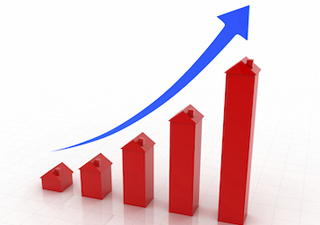Quote Of The Week
“There needs to be recognition of this growing shift to shared housing. The days of the quarter-acre block with a yard being the norm are rapidly receding. Reforms are needed to help ensure we manage this shift correctly.”
Strata Community Association Senior-Vice President Chris Irons
Census Reveals Nation’s Changing Face
 Australians are living closer together than ever before, with 2021 Census data revealing more than one in ten now live in apartments.
Australians are living closer together than ever before, with 2021 Census data revealing more than one in ten now live in apartments.
The figures show Australia’s population is growing fast, more than doubling since 1971 to almost 25.5 million people.
The number of Millennials (aged 25 to 39) is now at a similar level to Baby Boomers (aged 55 to 74) with 5.4 million in each group.
Statistician Dr David Gruen says the data shows who we are as a nation and how we have changed.
More than one million new residents arrived in Australia between 2017 and 2021 and now the proportion of Australian residents born overseas or have a parent born overseas is more than half.
The largest increase in country of birth outside of Australia is India with 217,963 additional people counted.
The Aboriginal and Torres Strait Islander population has also increased by a quarter since 2016 to 812,728 making up 3.2% of the total people counted.
Property Prices Lift Household Wealth
 Household wealth figures are rising, thanks mostly to growing property prices.
Household wealth figures are rising, thanks mostly to growing property prices.
According to ABS figures, total household wealth rose by 1.2% to a record $14.9 trillion in the March 2022 Quarter.
Residential property assets contributed 1.4 percentage points to that growth.
ABS head of finance and wealth Katherine Keenan says even though the pace of property price growth has started to moderate in Sydney and Melbourne, increases in other capital cities and regional areas resulted in an overall rise in house prices during the quarter.
The figures show wealth per capita is now a record high of $574,807, which is 0.6% higher than the previous quarter.
Although household wealth has increased, the report found superannuation balances are down by 1.3% as a result of the poor performance of overseas share markets.
Keenan says since the start of the pandemic in 2020, appreciating asset prices have boosted household wealth by 35.3%, and residential property accounts for most of this growth.
Cheaper To Buy Than Rent In 3300 Places
 The rental crisis means one in four homes will be cheaper to buy than rent over the next ten years.
The rental crisis means one in four homes will be cheaper to buy than rent over the next ten years.
PropTrack’s Buy or Rent Report reveals 3,300 suburbs where it is cheaper to buy than rent.
Nationally 27% of all dwellings are cheaper to buy than rent, down from more than 50% at the same time last year. More than half the dwellings in Queensland, WA and the Northern Territory are estimated to be cheaper to buy rather than rent.
In the Northern Territory 98% of properties fall into this category, followed by Western Australia 62% and Queensland 51%.
High prices in Victoria mean only 7% of properties are cheaper to buy than rent, while only 10% in NSW are in this category.
The figures are calculated by comparing mortgage repayments on the median dwelling price with the median rent.
The biggest difference in payments is in Fly Creek in the Northern Territory where buying is $1,620 cheaper per month than renting.
Census Depicts A Strata Story
 Governments throughout Australia need to pay more attention to the needs of those living in high density housing, according to the Strata Community Association (SCA).
Governments throughout Australia need to pay more attention to the needs of those living in high density housing, according to the Strata Community Association (SCA).
SCA (Qld) Senior-Vice President Chris Irons says the 2021 Census data reveals 10% of Australians live in an apartment.
He says this shows how important it is for strata housing to be at the forefront of policy making.
“A quick examination of the housing data from the 2021 Census indicates a tremendous trend towards higher density apartment living,” Irons says.
“In the 2016 Census, there were estimated to be just over 1.2 million occupied apartments across the country. That figure has exploded to approximately 1.7 million. That’s about 100,000 apartments being constructed on average every year.
“There needs to be recognition of this growing shift to shared housing. The days of the quarter-acre block with a yard being the norm are rapidly receding. Reforms are needed to help ensure we manage this shift correctly.”
Big Banks Lose Market Share
 Borrowers are shopping around for more competitive interest rates with big banks losing out to minor lenders.
Borrowers are shopping around for more competitive interest rates with big banks losing out to minor lenders.
Online property exchange PEXA figures show the number people refinancing their mortgages is rising.
PEXA’s data covers 95% of refinancing commitments.
It shows the Big Four banks are losing thousands more loans than they are winning each month.
PEXA head of research Mike Gill says the number of refinancing deals lodged through its platform has increased by almost 50% in Queensland, 46% in WA, 23% in Victoria, and 15.6% in NSW.
Macquarie analyst Victor German says the mortgage market increased by about $31 billion in the three months to April, but the Big Four accounted for only $11.5 billion of those loans.
German says in the past the big banks were able to offer “rock-bottom fixed interest rates” below what smaller lenders could – but that is no longer the case.
As a result, the big banks are losing market share.




